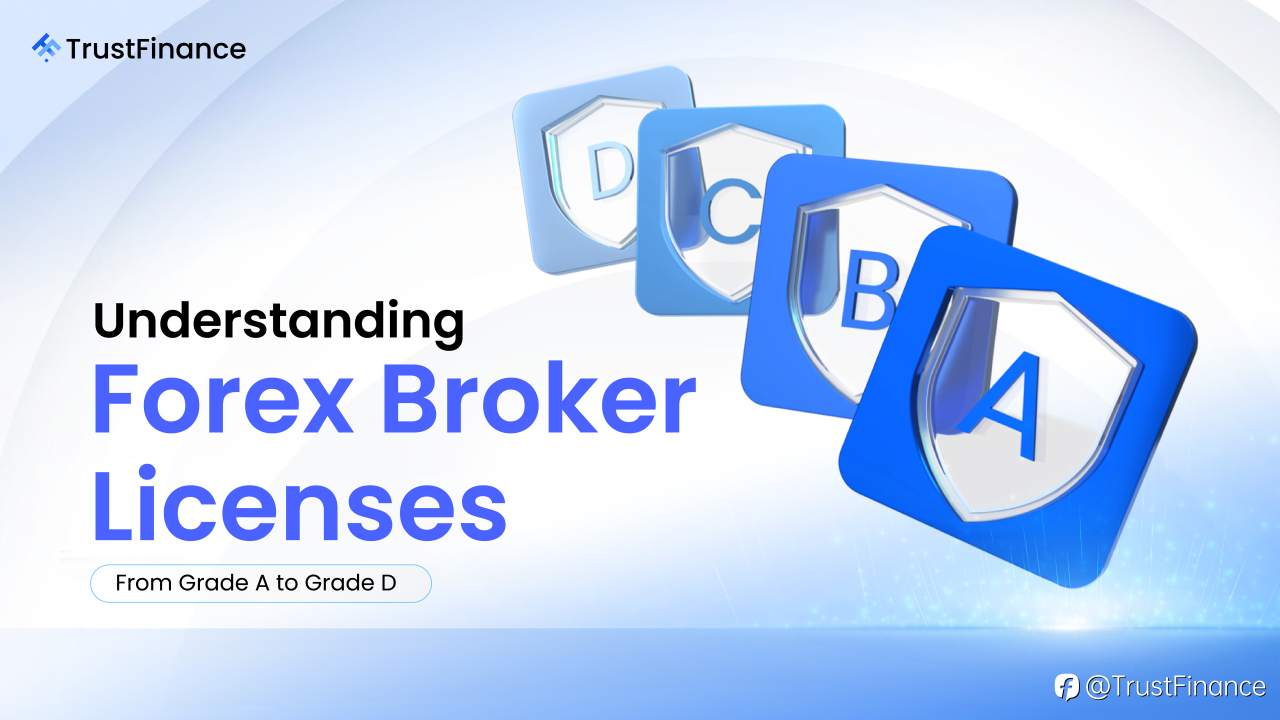
Choosing a broker licensed by a reputable regulatory authority is one of the most effective ways to protect your capital, because regulation governs how client funds are safeguarded, how complaints are handled, and what happens when things go wrong. In this guide, we explain license Grades A–D, what each grade implies for investor protection, and how to use these distinctions in your decision. Licenses act as independent certification of a broker’s transparency and legal compliance; authorities monitor financial conduct and client-asset protections.
There are 4 grades for license:

Grade A — Highest Trust Level
Top-tier regulators with rigorous capital, audit, reporting, conduct, and client-asset segregation standards; intensive ongoing supervision. Minor breaches can result in sanctions or license withdrawal.
Grade A License Example:
- Australian Securities and Investments Commission (ASIC) — Australia
- Canadian Investment Regulatory Organization (CIRO) — Canada
- Commodity Futures Trading Commission (CFTC) — United States
- Cyprus Securities and Exchange Commission (CySEC) — Cyprus
- Financial Conduct Authority (FCA) — United Kingdom
- Financial Markets Authority (FMA) — New Zealand
- Japanese Financial Services Agency (JFSA) — Japan
- Monetary Authority of Singapore (MAS) — Singapore
- Securities and Futures Commission (SFC) — Hong Kong SAR
- Swiss Financial Market Supervisory Authority (FINMA) — Switzerland

Grade B — Trusted Level
Reputable authorities with solid standards; somewhat less stringent than Grade A but with enforceable supervision and penalties.
Grade B License Example:
- Capital Markets Authority (CMA) — Kenya
- Dubai Financial Services Authority (DFSA) — United Arab Emirates
- Financial Sector Conduct Authority (FSCA) — South Africa
- Israel Securities Authority (ISA) — Israel
- Securities and Commodities Authority (SCA) — United Arab Emirates
- Securities and Exchange Board of India (SEBI) — India

Grade C — Moderate Risk Level
Regulation exists but supervision/enforcement can be lighter; investor protections and disclosures vary.
Grade C License Example:
- Bank of Botswana (BOB) — Botswana
- Bermuda Monetary Authority (BMA) — Bermuda
- Central Bank of Ecuador (BCE) — Ecuador
- Central Bank of Russia (CBR) — Russia
- Financial Market Commission (CMF) — Chile
- Superintendence Financial of Colombia (SFC) — Colombia

Grade D — High Risk Level
Low licensing barriers and light oversight; limited international recognition and weaker recourse pathways.
Grade D License Example:
- Cayman Islands Monetary Authority (CIMA) — Cayman Islands
- Dutch Authority for the Financial Markets (AFM) — Bonaire, Sint Eustatius and Saba
- Financial Services Authority (FSA Seychelles) — Seychelles
- Financial Services Authority, St Vincent & the Grenadines (FSA) — Saint Vincent and the Grenadines
- Mauritius’ Financial Services Commission (FSC) — Mauritius
- Vanuatu Financial Services Commission (VFSC) — Vanuatu
Recommendation: Check more company background, principals’ track records, independent reviews, and the availability of meaningful recourse mechanisms.

3-Step License Verification (via TrustFinance)
- Search your broker on TrustFinance: Find the broker’s page and view Security Information at the broker's page.
- Open the Regulator Link from TrustFinance: Click through to the official regulator register provided on the broker’s TrustFinance profile. Confirm legal name, license/registration number, status, and permitted activities match exactly.
- Double-check Risk Signals on TrustFinance: Scan recent verified reviews, withdrawal/funding feedback, and any alerts shown on the profile.
Choosing a Forex broker licensed by a reliable regulatory authority is a crucial step every investor should take.Understanding the importance and credibility levels of regulatory authorities helps investors gain confidence in their broker selection and invest more securely.
🔍 Check your broker & leave a review now on TrustFinance: https://www.trustfinance.com
Tuyên bố miễn trừ trách nhiệm: Quan điểm được trình bày hoàn toàn là của tác giả và không đại diện cho quan điểm chính thức của Followme. Followme không chịu trách nhiệm về tính chính xác, đầy đủ hoặc độ tin cậy của thông tin được cung cấp và không chịu trách nhiệm cho bất kỳ hành động nào được thực hiện dựa trên nội dung, trừ khi được nêu rõ bằng văn bản.


Để lại tin nhắn của bạn ngay bây giờ